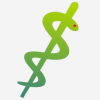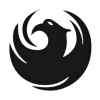Heres a very good review article on this complicated subject that we spend so much time debating on this board.
ConclusionsThe power of natural products lies in using them as adjuvants to standard anticancer therapies but the struggle is that they often exhibit contrary actions, depending on concentration. At high doses ( > 50 µM) natural compounds presented in this article have pro-oxidant properties by limiting antioxidant capacity of cancer cells (Figure 3). Direct inhibition of cellular antioxidants or suppression of pathways leading to their expression can sensitize cancer cells to chemo- and radiotherapy. Normal cells are not that sensitive to the manipulations in redox homeostasis as their growth and proliferation are not that much ROS-dependent. Contrarily, cancer cells operate under constant oxidative stress and are very sensitive to the disruption of their enhanced ability to scavenge free radicals. Therefore, impairing antioxidant capacity of tumors emerges as a good strategy to target them. Especially inhibition of Nrf2 pathway seems a very promising approach as Nrf2 controls expression of crucial cellular antioxidants, drug efflux pumps and detoxification enzymes. Simultaneous inhibition of Nrf2 and prosurvival NFĸB signaling is even more effective in promoting death of tumor cells. Therefore, natural products that suppress Nrf2 and NFĸB pathways are promising candidates for adjuvants to chemo- and radiotherapy allowing for lowering their doses. It is nevertheless essential to bear in mind that the effect they induce in cells depends on the applied dose, cell type, exposure time and environmental conditions. The same natural product in different concentrations often possesses contrary properties. This is why it is so challenging to translate results from in vitro models to in vivo conditions. Concentrations used in cell lines experiments are often very hard to achieve in patients. Given the poor plasmatic bioavailability of active compounds and biotransformation processes they undergo in the body, the circulating concentration of natural compounds administered orally are rather low. Moreover, the biological effects they produce do not necessarily need to be a consequence of the action of only the parent compound, but might also be assigned to its metabolites. Therefore, the effects natural products present in vivo might be different or even opposite to expected and instead of potentiating the effect of chemo- or radiotherapy, they might weaken their action. The majority of clinical trials test ROS scavenging properties of natural compounds in the context of cancer chemoprevention or their ability to alleviate side effects of chemo- and radiotherapy. Just a few addressed a question of synergistic effects of natural products with classic anticancer therapies and the results so far warrant further investigation. There is a strong need for clinical studies testing these combination treatments in defined cancer types with special focus on bioavailability and stability of natural products.
http://www.impactjou...23&path[]=43637














































